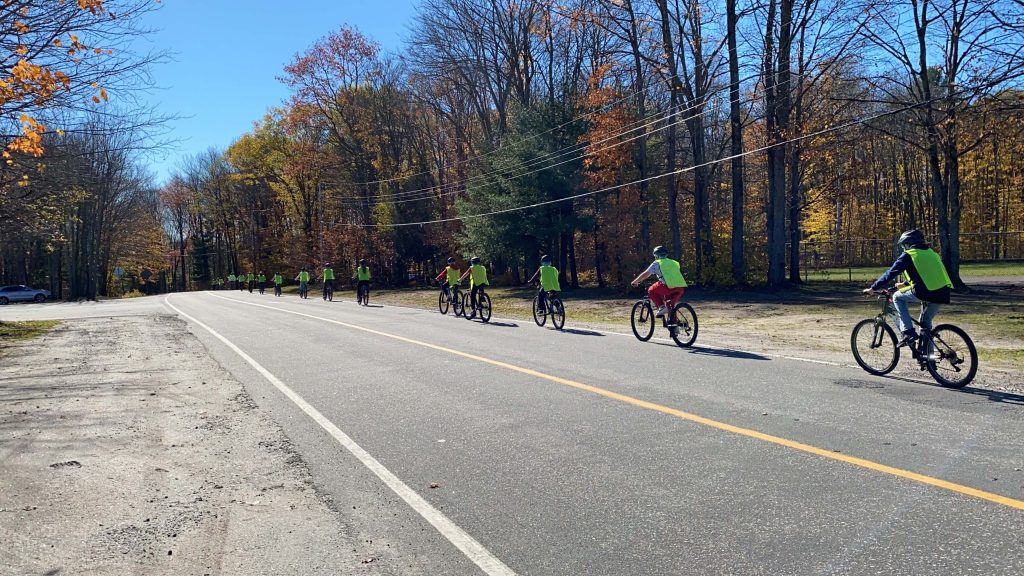A class set of bicycles has been purchased for Near North District School Board (NNDSB) students in Grades 7 and 8 to learn more about walking and wheeling to school. The Safe Cycling with NNDSB project is a partnership between the board, the North Bay Parry Sound District Health Unit, Ride Smart and Ontario Provincial Police. It was funded through a grant from Ontario Active School Travel, a program of Green Communities Canada (GCC), a non-profit organization that promotes active school travel, and the Government of Ontario.
The $30,000 grant enabled the purchase of a fleet of bicycles, safety equipment, a portable trailer to store the bikes, and CanBike Level 4 accreditation for all teachers participating in the program.
The program uses the Ride Smart Cycle Education program to prepare students for safe use of bicycles, including which type of bike is safe for a variety of roadways, emergency braking, hand signals and shoulder checks. In addition to learning how to cycle safely, “students learn how active transportation can reduce their carbon footprint”, says Emily Samuel, principal of safe schools for NNDSB.
Safe Cycling with NNDSB was recently launched at the Humphrey Community Centre, where students displayed their cycling knowledge and skills, and where community partners were acknowledged.
In his opening remarks, NNDSB Chair Jay Aspin noted that supporting students to become confident and capable cyclists was an excellent application of experiential learning that supported the board’s commitment to Excellence in Teaching and Learning, one of the pillars of the board’s multi-year strategic plan.
Superintendent Gay Smylie added that, “Walking and wheeling to school supports healthy brain development, which can lead to improved learning and academic outcomes. Research proves that kids who move more aren’t just healthier, they also tend to do better academically, behave better in class and miss fewer days of school.”
The Government of Ontario is providing $1.5 million through March 2022 to GCC to support new active school travel initiatives across the province that will help prepare students for learning and improve safety in school zones. This follows a previous investment of $3.5 million toward 28 active school travel projects benefiting 52 communities across Ontario between 2017-2020.
“In recent decades we have seen a significant decline in rates of walking to school and a marked increase in traffic volumes in school zones,” said Kate Berry, Ontario
Active School Travel program director with GCG. “This initiative is a great opportunity to reverse these trends by expanding on the previous work in the Near North region to rebuild a culture of active school travel. We look forward to continuing to collaborate with and support our local partners to implement this exciting initiative.”
Walking and cycling to school (while maintaining social distancing) are considered safe and healthy activities by public health authorities. Safe Cycling with NNDSB, GCC and its many partners are working to make active transportation the “new normal.” Benefits to active school travel include improved physical and mental health and well-being, increased cognitive function and social development that improves academic performance, safer school zones through traffic calming and reduced congestion, and improved air quality and lower greenhouse gas emissions.
